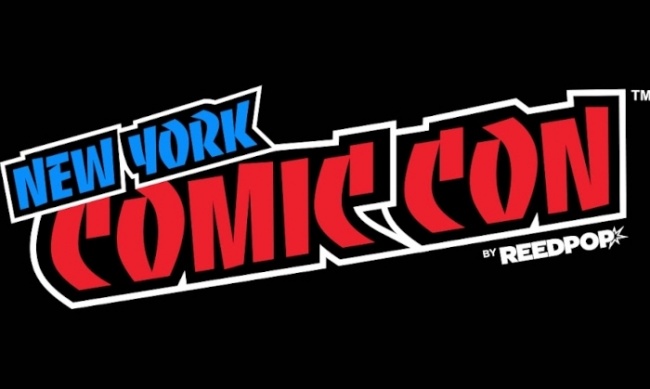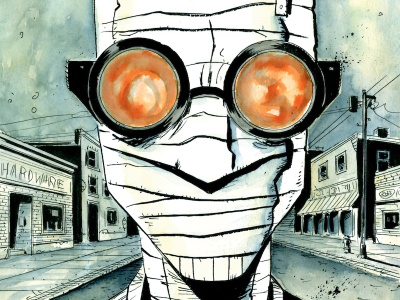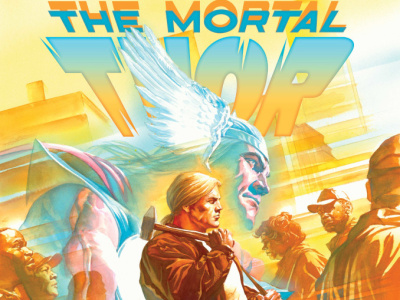Later this week, taking all appropriate precautions, I’ll be plunging back into the world of in-person conventions at NYCC 2021, where I’m doing a couple of panels: Kickstarting Comics in 2021 and Beyond on Friday at 12:45, and NFTs and the Future of Collectibles on Saturday at 11:15.
I think we all understand the contours of crowdfunding by now, but NFTs remain a point of confusion and controversy, particularly among collectors, dealers and publishers who don’t see how a digital-first medium can do anything for their business except threaten it. One goal of the panel is to explore how developments in this fast-moving space can be relevant to the traditional industry; another is to address square-on the urgent issues of environmental sustainability that have come to the fore as fans and activists look under the hood at what makes blockchain technology tick. As someone who has been studying, talking about, and lately working with companies in this industry, I’m looking forward to hosting a conversation with publishers, creators and NFT providers on what this all means to the business.
Like it or not, NFTs are here. Last week DC announced a partnership with Palm NFT, kicking off with digital collectibles issued in conjunction with the DC Fandome event this week. Marvel has been rolling out its program with VeVe (disclosure: I briefly served as an advisor to their parent company) since summer. Other publishers including Dynamite Entertainment, Heavy Metal, and smaller independent presses have been dipping their toes in the water, along with creators selling their own work as one-of-a-kind digital art.
The early impetus for these efforts came earlier this year, when word started spreading of digital collectibles such as NBA Top Shot and artwork by contemporary artists like Beeple selling for eye-popping amounts of real money. The reason for this is that NFTs, unlike other digital media, are authenticated using blockchain technology (usually Ethereum, but sometimes other chains), which can immediately determine whether the “token” (unit of digital media) was officially issued and part of the limited set. As every collector knows, scarcity drives collectability, and if tens or hundreds of thousands of people are chasing after a 1-of-100 or 1-of-10 or 1-of-1 item, the price is going to go up. This is the same dynamic that is driving cryptocurrencies like Bitcoin and Ether, based on the same blockchain technology, to stratospheric heights.
Since comic publishers and comic fans are already wired into the collector mindset, it’s not a huge stretch to import this model into the existing business as simply another kind of licensed merchandise, under similar terms as toys or collectible art prints based on corporate or creator-owned IP. In this case, the convenience of digital distribution – which is not cost-free, but is certainly less complex than physical manufacturing – could make it an easy transaction.
That was the plan, anyway. But then an issue emerged that froze the market in its tracks.
More heat than light? Blockchain technology works because it is decentralized: there’s no one company or platform that serves as a single point of authority – and, potentially, single point of failure – for the network. It also relies on computers all over the world grinding away on increasingly complicated mathematical formulas to safeguard security and slowly add to the available stock of tokens. All of this is extremely energy-intensive. Accounts vary in exactly how much, but it’s definitely a lot.
The vast majority of this energy is spent in the world of cryptocurrency (Bitcoin etc), but NFTs also have an impact. Each time NFTs are “minted” (issued and added to the blockchain), there is a financial and energy cost.
Activists and fans have seized on this issue to challenge creators and companies doing business in the space, hoping to halt the emergence of the market until these issues have been addressed. In doing so, they have done the world a huge favor.
Tech companies, even those made up of generally ethical people, do not usually act ethically or responsibly without some market pressure. In this case, there is a technical fix to the Ethereum blockchain that could eliminate 99 percent of the issues related to computational complexity, but no one has seen it as a matter urgent enough to devote collective resources toward solving. Now, it’s urgent. And while the industry as a whole is focused on addressing it, individual companies including Palm NFT and Curio (a company I am currently working with, who will be represented on the panel) are taking additional steps to mitigate the environmental impact by using alternative technologies and making investments in carbon reduction.
If this sounds like “greenwashing,” well, investing in carbon reduction is better than not investing in it. And perhaps these companies will set an example for the traditional industry to offset their own impact in printing and shipping physical products all over the world, as well as the energy consumption of consumers who have to travel to retail shops or conventions to buy them.
Where we’ve been, where we’re going, and what’s in it for the traditional business. Last year at this time, almost no one knew what “NFT” meant (for the record, “non-fungible token.”) Now they are a Big Deal. A market that moves that fast goes through some things.
First, this idea of NFTs as purely digital collectibles to be acquired and resold at a profit is evolving. Drops that sold out in April and May purely on the basis of novelty and collectability are, in September and October, no longer guaranteed money-makers, to the consternation of IP owners operating on recent market assumptions. This is requiring some adjustments to the initial economics of the business to shift toward secondary market sales (transactions among collectors) as a way to drive revenues.
The current big thing in NFTs right now is “generative art.” That is, each individual NFT is a little bit different from others in the set, and these can be combined to form new, cool and unexpected results. Original IP like The Bored Ape Yacht Club, which first appeared in the spring, is generating enormous revenues, raising the question of how well this model would land using properties that everyone knows and loves, like comics. By the time I write this, however, the market may be so saturated that people have moved on to something else entirely.
One of the more interesting projects out there, deeply relevant to the collectibles industry, involves NFTs tied to physical collectibles. Curio is working with a company in this space called Introve, which issues NFTs redeemable for genuine highly-collectible comics, such as the first four issues of Teenage Mutant Ninja Turtles in CGC 9.4 or better (see “Trading Collectibles Via NFTs”). The added value comes from several places: the fact that the underlying asset is stored in a secure, climatized facility, removing the need to ship, store and ensure the book unless the collector redeems the token; the ability of the collector to enjoy and display a digital edition of the comic as part of their collection; and friction-free transactions on a digital exchange.
Ultimately, the goal is to bring free-spending folks from the crypto community into the collectibles world and vice versa, uniting two red hot markets and expanding the surface area for both. Early results show this may take some time, but could have enormous impact once it happens.
There are also some interesting projects using NFTs as promotional items, as part of marketing and fan engagement campaigns (DC’s Fandome experiment falls in this category), and as ways to create incentives for fans to buy physical products (books, games, toys) that come with unique NFT components. Come to your retailer to buy the item, get the NFTs: everyone wins.
And then there is the real bonus, which is creating new revenues for artists working on their own projects, notwithstanding whatever arrangements that make with their publishers and the owners of corporate IP.
To be continued… Anyway, that’s what we’ll be talking about on Saturday. If you’re interested in developments in the field from any of these areas, or want to hear folks in the business do their best to answer tough questions, I hope to see you there.
The opinions expressed in this column are solely those of the writer(s), and do not necessarily reflect the views of the editorial staff of ICv2.com. Salkowitz has a current business relationship with Curio, which he has disclosed.
Rob Salkowitz (@robsalk) is the author of Comic-Con and the Business of Pop Culture.

Column by Rob Salkowitz
Posted by Rob Salkowitz on October 4, 2021 @ 1:36 pm CT
MORE COMICS
Story Inspired by H.G. Wells' 'The Invisible Man' Returns in Hardcover
July 3, 2025
First published by Vertigo, Lemire’s reimagining of the classic H.G. Wells novel The Invisible Man will return in a new hardcover edition.
From Marvel Comics
July 3, 2025
Check out the first three covers of the new series, which sees the God of Thunder reborn as a mortal.
MORE COLUMNS
Column by Rob Salkowitz
June 30, 2025
Columnist Rob Salkowitz talks to a mid-sized publisher who told him we are at "DEFCON 2, if not DEFCON 1."
Column by Scott Thorne
June 30, 2025
This week, columnist Scott Thorne discusses sales on the Final Fantasy set and his experience with Games Workshop's policies on breaking release dates.








